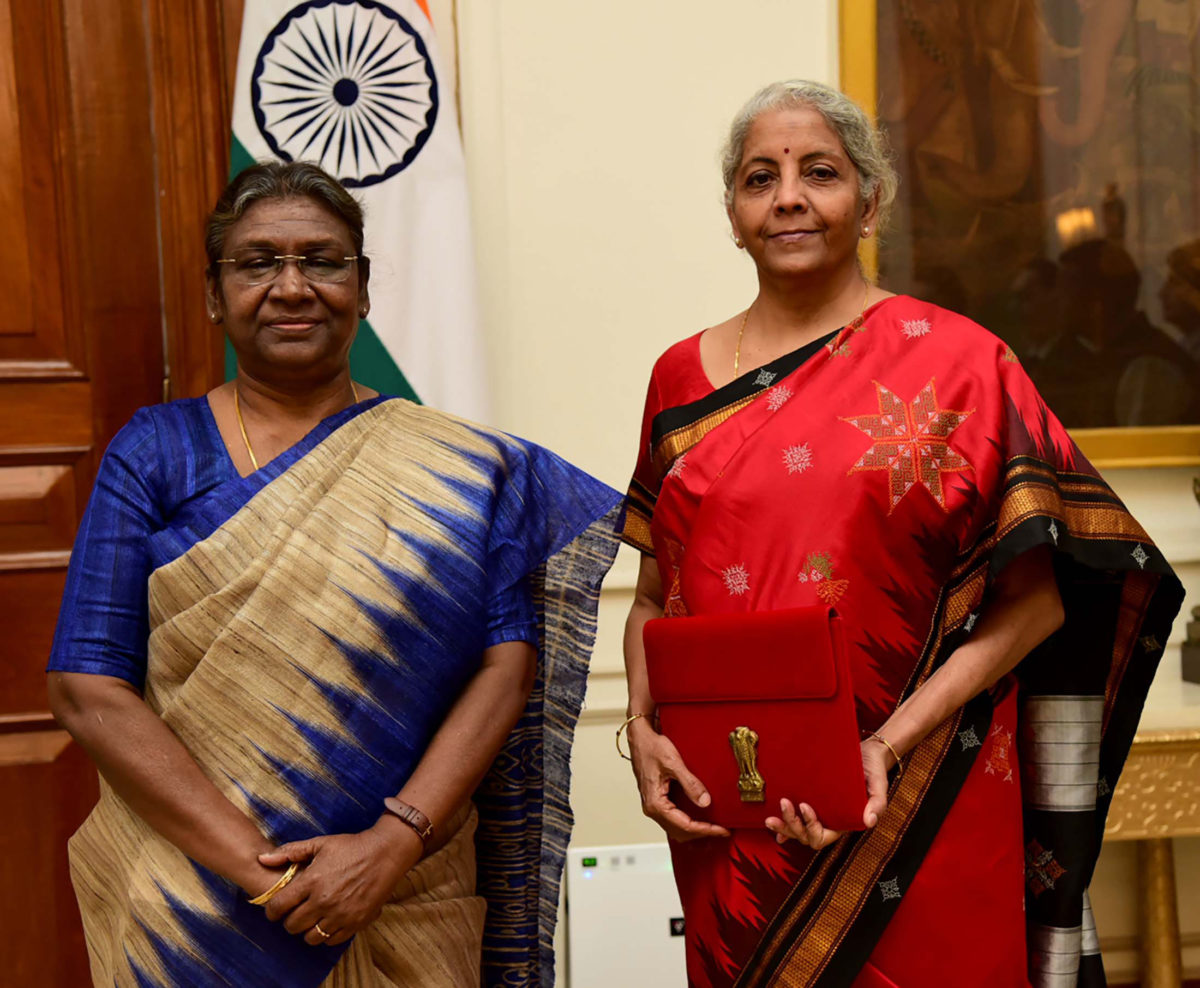Green growth figures as one of the seven priorities in the Union Budget 2023-24 for India—the world’s fifth largest economy. And as the nation targets net-zero carbon emission by 2070, “the Budget builds on the government’s focus on green growth,” said finance minister Nirmala Sitharaman in her budget speech in the parliament today.
The budget puts the focus on emerging clean technologies like energy storage, green hydrogen, and electric mobility. It also signifies the government’s resolve to boost domestic solar and battery manufacturing as it continues nil customs duty on specified inputs for solar cell and module components and waives import duty on capital goods and machinery required to manufacture lithium battery cells for EVs.
The minister also announced viability gap funding (VGF) for battery energy storage projects with a capacity 4 GWh. A detailed framework for pumped storage projects will also be formulated.
Customs duty has been waived off on capital goods and machinery required to manufacture lithium-ion cells for batteries used in electric vehicles. This will come into effect from February 2 and will be applicable till March 31, 2024. The move follows the INR18,100 crore production-linked incentive scheme for advanced chemistry battery cells, providing further impetus to domestic battery manufacturing for green mobility.
The minister said India targets green hydrogen production capacity of 5 MMT per year by 2030. And that the recently launched National Green Hydrogen Mission, with an outlay of INR 19,700 crore, will facilitate transition of the economy to low carbon intensity, reduce dependence on fossil fuel imports, and make the country assume technology and market leadership in this sunrise sector.
The minister also announced construction of inter-state transmission system for evacuation and grid integration of 13 GW renewable energy from Ladakh with investment of INR 20,700 crore including central support of INR 8,300 crore.
The budget provides INR 35,000 crore for priority capital investments towards energy transition and net-zero objectives, and energy security by the Ministry of Petroleum & Natural Gas.
For encouraging behavioural change, a Green Credit Programme will be notified under the Environment (Protection) Act. This will incentivize environmentally sustainable and responsive actions by companies, individuals and local bodies, and help mobilize additional resources for such activities, said the minister.
Industry response
Industry stakeholders have lauded the budget announcements and stress on detailed policy structure and timely implementation of the measures.
NSEFI CEO Subrahmanyam Pulipaka expressed happiness that the Ministry of Finance has accepted their request to create a detailed framework for pumped storage projects in the country. “The viability gap funding announced for storage system with the capacity of 4 GWh will help penetration of solar as a dispatchable energy generation source,” he added.
Pulipaka also welcomed the continuation of nil basic customs duty (BCD) on specified inputs for use in the manufacturing of EVA sheets or backsheets, solar tempered glass, flat copper wire for use in the manufacture of photovoltaic ribbons that are used in the manufacturing of solar cells and modules. This will help the growth of solar manufacturing as well as the allied balance-of-system (BoS) manufacturers, especially as gigawatt-scale facilities come up in India under the two PLIs announced for solar modules.
Debi Prasad Dash, executive director, India Energy Storage Alliance (IESA), said their demand for custom duty exemption on capital goods and machineries for Li-ion cell manufacturing has been met in this budget. Dash added that VGF for battery energy storage projects with a capacity 4 GWh will help to advance the battery projects in India and will support higher renewable adoptions for the grid. This will help SECI, NTPC and various state agencies to come up with more battery storage projects in India.
Under India Battery Supply Chain Council (IBSCC), IESA work with 50+ potential battery giga-factory and supply chain players and expect to see 140+ GWh of battery cell manufacturing capacity by 2030. IESA released India Energy Storage Vision document last year which projects a grid-scale market potential of 160 GWh by 2030.
Sabyasachi Majumdar, senior vice president & group head-corporate ratings, ICRA Ltd, said the announcement of a VGF scheme for battery energy storage projects and the stated intent of coming out with a framework for pumped hydro projects is a positive for the RE energy sector, given the importance of storage for RE sources, which are intermittent in nature. However, the fleshing out of the details is awaited; and timely implementation of these measures will remain crucial.
“The proposal for investment in transmission lines for large-scale evacuation of green power from Ladakh is likely to support RE capacity addition and grid integration. The already announced National Green Hydrogen Mission with a target to produce 5 MMT of green hydrogen is also a positive, although the cost competitiveness of the same remains a key monitorable,” he added.
Srinivasan Viswanathan, chief executive officer of Vibrant Energy, said the budget is progressive and beneficial to the energy sector. “The statement on Green Growth is highly comprehensive, with a vision for the green hydrogen mission costing INR 19,700 crore, which would undoubtedly accelerate the energy transformation. The promotion of Ladakh green energy corridor is a welcome step. We appreciate the INR 35,000 crore capital investment for reaching the net zero goal, however, we look forward to receiving the policy structured in a detailed manner,” he said.
This content is protected by copyright and may not be reused. If you want to cooperate with us and would like to reuse some of our content, please contact: editors@pv-magazine.com.









By submitting this form you agree to pv magazine using your data for the purposes of publishing your comment.
Your personal data will only be disclosed or otherwise transmitted to third parties for the purposes of spam filtering or if this is necessary for technical maintenance of the website. Any other transfer to third parties will not take place unless this is justified on the basis of applicable data protection regulations or if pv magazine is legally obliged to do so.
You may revoke this consent at any time with effect for the future, in which case your personal data will be deleted immediately. Otherwise, your data will be deleted if pv magazine has processed your request or the purpose of data storage is fulfilled.
Further information on data privacy can be found in our Data Protection Policy.